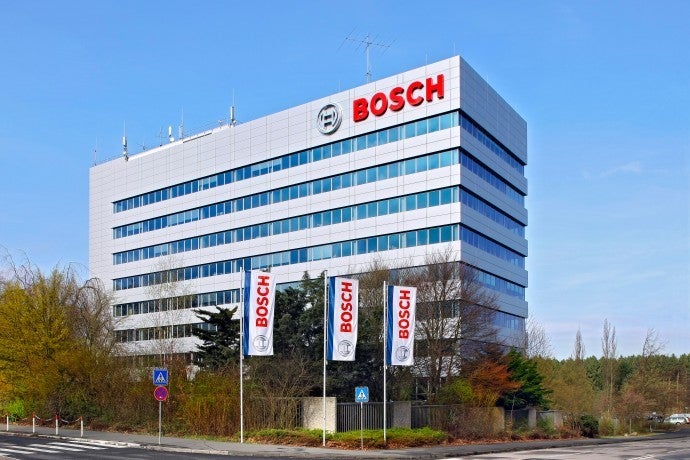 By Ian Morton
By Ian Morton
If the trend of an ageing population continues, the car industry will be faced with a 20m shortfall of customers in the 30-39 age group compared with the market available now.
As we are often reminded, we are “an ageing population” and a mounting economic problem. How may the productivity of decreasing numbers of young workers sustain the needs of increasing numbers of unproductive older people?
In social terms the demographic phenomenon can look rather different. A recent ‘Fit and Fifty’ report published by the Economic and Social Research Council emphasised a new free-spending attitude among the over-50s because of better health, longer life expectancy, early retirement, increased disposable income (mortgages paid off, children gone) and a new willingness to dispose of that income, and of savings too, in search of personal fulfilment.
“Lifestyles and leisure patterns of those in their 50s are surprisingly similar to those in their 30s and 40s,” declared the report. “Age in itself is no longer the predictor.”
“parents trading up to more premium priced products“ |
Those of us who have crossed the half-century watershed, and plenty who are beyond successive frontiers, could have told the world that. Age is not withering us, matey. Ignore us at your peril, for we make up a mighty slice of the consumer base. Without us there won’t be enough consumer demand to keep those youngsters in work.
There are big implications for the car industry, of course. Some are practical. Ford claims to be at the cutting edge here, pointing out that within its latest youth appeal styling lie improved access, easier layout, and handier controls with larger symbols to take account of drivers with reduced acuity and agility. Much of this is the result of lessons learned by strapping the designers of its interiors into the ‘third-age suit’, a clever all-over straightjacket devised at Dunton to demonstrate to young Ford stylists what sort of constrictions time or disability can impose. But beyond the design tangibles, the two broader questions of buying patterns and the shift in the age of the population must be addressed. Both are seemingly predictable.
How well do you really know your competitors?
Access the most comprehensive Company Profiles on the market, powered by GlobalData. Save hours of research. Gain competitive edge.

Thank you!
Your download email will arrive shortly
Not ready to buy yet? Download a free sample
We are confident about the unique quality of our Company Profiles. However, we want you to make the most beneficial decision for your business, so we offer a free sample that you can download by submitting the below form
By GlobalDataCharles Young, former senior economic advisor to the government and now director of Oxford based market forecasting company LMC International, discoursed recently on the importance of demography in thinking about future demand for cars.
“As a forecaster I could make many statements about the way things will be in 2015, and many of them will turn out to be wrong,” said Young in Automotive World
Opinion. “But here is one that won’t – those of us who are still alive will be exactly 15 years older than we are today.
“That statement may sound so banal and obvious that it couldn’t possibly have any interesting implications. But it does have some implications, because each of the following statements is true. The probability of buying a car, and the type of car that is bought, depends on the age of the potential buyer : and the age distribution of the population is uneven.”
The latter point is inarguable. Statistics gathered by Young’s firm show more Western Europeans aged 35-39 than in any other age bracket – approaching 31m, closely followed by those aged 30-34, numbering 30.5m, so bringing the region’s 30-39 year-olds to around 61.5m.
By comparison the present 40-49 group totals 54.2m and the 50-59 group adds up to 47m. More significantly, the age groups younger than the 30-39 bulge also decline in numbers. Those in their 20s total 52.7m. Teenagers total 45.8m. The under-10s total 41.7m. Hence the ageing population.
“Continuing investment in small car development would seem to be sound for demographic reasons alone“ |
Push everyone on a couple of decades from now, and the numerically dominant 30-somethings will have become the dominant 50-somethings. At the same time today’s teenagers will have grown into a 30- something Western European market numbering 15.7m fewer than today’s. Look a decade further and our under-10s will present the industry with a 30-39 group shortfall of almost 20m compared with the market available now.
European based car firms must therefore contemplate significant change in their domestic market. Globalisation and involvement in the emerging economies of Eastern Europe, India, China and South America should provide a deal of solace, but careful handling of the statistical bulge at home will remain crucial.
Buying patterns according to age are fairly well defined at present and broadly self-evident, but it is also clear that senior age groups are maintaining higher levels of motoring activity. The ESRC notes that while UK car ownership peaks in the 40-49 bracket (89.1 per cent of men, 86.8 per cent of women) it remains high in the 50-59 group (86.1 and 82.1) and substantial in the 60-69 group (80.6 and 67.3).
Given that political and environmental interference remains within reason, and that car availability continues to allow personal mobility to play its proper role in our lives, these percentages will be sustained or will increase as today’s prospering 30-somethings in their turn mature to enjoy health, leisure, money and fulfilment.
But will the type of car still relate to the age of the buyer? The demand for smaller vehicles would appear to be unlikely to fall. While more than half the new cars purchased by the young are in the basic and small sectors, nearly one in five bought by the over-50s is in these categories, so a shrinking market among the young should be balanced by purchases by the more numerous middle-aged and old. In addition these categories will presumably continue to be politically favoured. Continuing investment in small car development would seem to be sound for demographic reasons alone.
The future for upper-medium, executive and sports cars looks good too. Segment preferences based on current German experience as logged by the Kraftfahrt Bundesamt indicate that these categories, and especially the executive sector, are favoured by significant percentages of 30s and 40s, and still more particularly by the over-50s. Since there will be so many more over-50s in a couple of decades’ time, these vehicle sectors should thrive too, and the drive to make them cleaner, lighter, more economical to run, and otherwise more acceptable becomes an increasing imperative. SUVs look to have a sound future since they appeal to a steady 2 percent of new car buyers aged between 30 and 59, and do not fade entirely until the over-75 group. But MPVs may falter, for they peak in the 30 to 49 age group where family needs predominate, and demographics point to fewer young families.
“Today’s technology-conscious 30s generation is unlikely to follow established precedent” |
And do today’s buying patterns provide a reliable map for the future? Market research must remain a crucial discipline in keeping check on how today’s 30 something bulge behaves as it ages. This group may well not mature in line with current experience, for if today’s over-50s think like 40 year-olds and even like 30 year-olds, as the ESRC says, what attitudes will prevail two decades hence?
Today’s technology-conscious 30s generation is unlikely to follow established precedent, and the demographic assertion that the type of car bought depends on the age of the potential buyer may not prove watertight for long. Niche models and special versions covering new age/attitude variations may well turn out to be the answer. Only market research will produce it.
Although social attitudes among the young have been found to be largely consistent across the main Western Europe countries, national variations within the region will also remain important. While new car purchasing peaks over 45-54 in Germany, the UK peak extends over 30-44, according to Ford market research.
It would seem that while demographics will provide the general picture, market research will paint in the essential detail.
By Ian Morton
To view related research reports, please follow the links below:- The world’s car manufacturers: A financial and operating review Winning in an Age of Change: The new rules of engagement in automotive supply |







